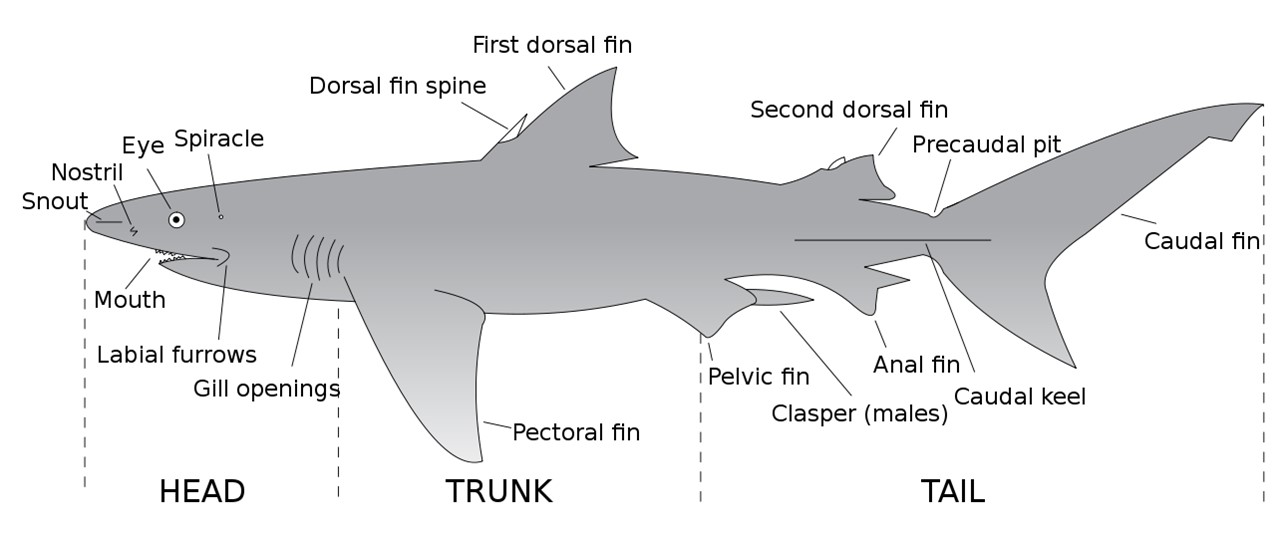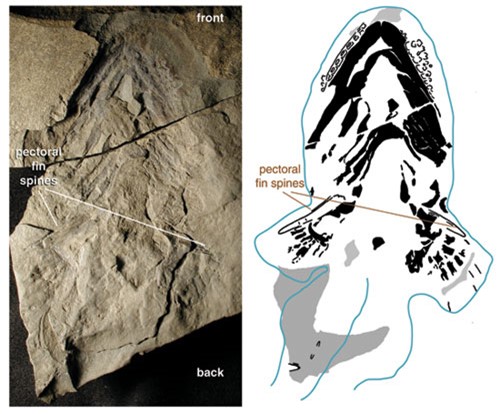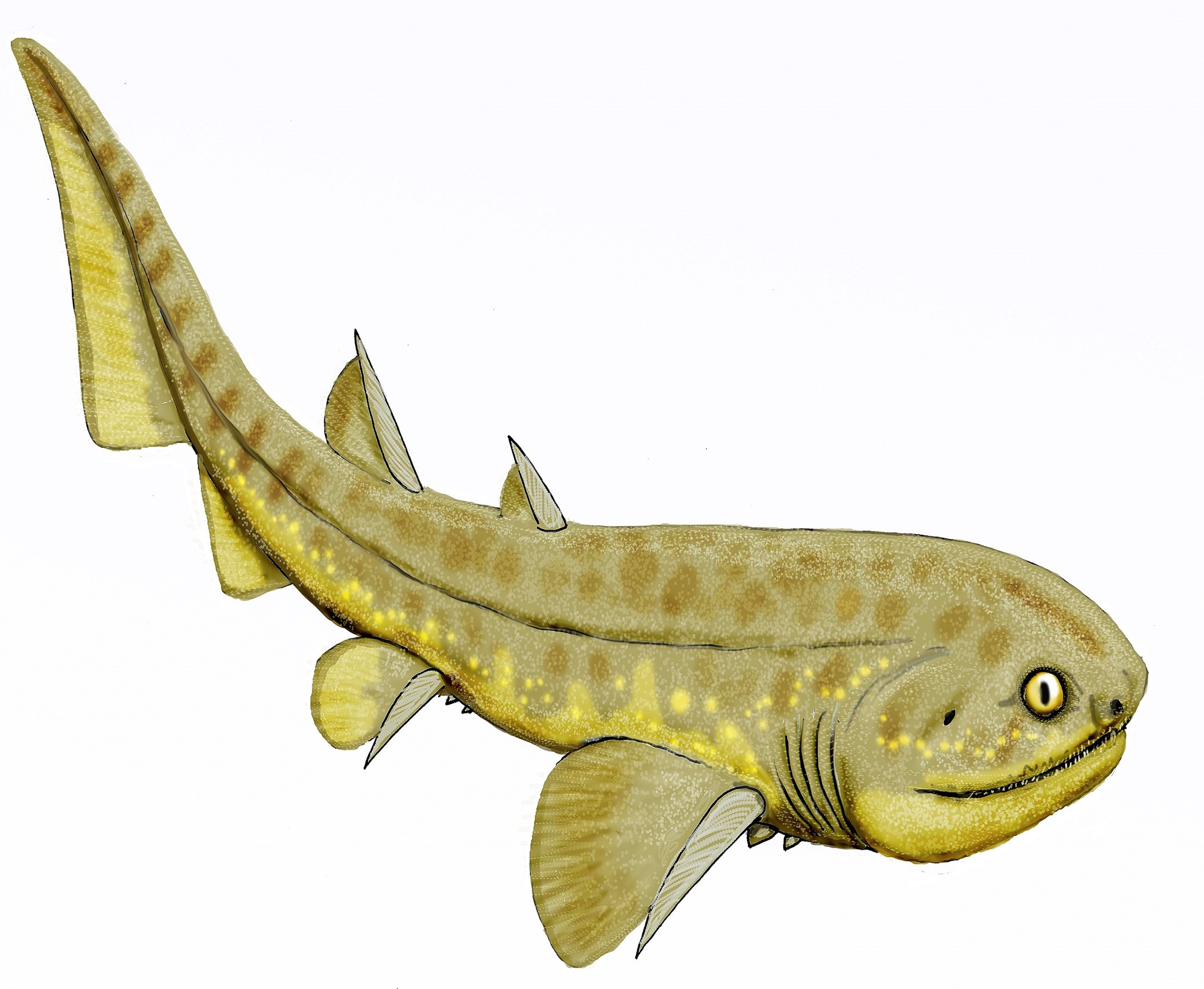
Credit: Hermanus Backpackers, CC BY 2.0, via Wikimedia Commons
Sharks have been so successful, for so much longer than so many other lifeforms, that you could call Earth the shark planet.
They evolved over 400 million years ago, meaning they’re older than trees. They’re 6 times older than the North Star! And over a thousand times older than humans. They’ve survived all 5 known mass extinction events.
Over that long, long period, they’ve diverged into hundreds of species and adapted to every marine environment from deep oceans to estuaries.
And they’re magnificent creatures: sharks recover from injury and heal quickly. They almost never develop cancers or get heart disease. And they’re immune to infections. Some species, like the Greenland shark, can live more than 400 years.
Sharks are essential to the health of Earth’s oceans, culling sick and weak fish and scavenging dead ones. But today, they’re in great danger.
Sharks mature and reproduce slowly, so they don’t adapt quickly to environmental changes.
While they’re highly efficient predators, they have almost no interest in humans—we’re not their natural prey.
But they’re often killed by fishermen. And their numbers are declining from overfishing, mostly for shark fin soup. Eighty million are caught each year, often their fins cut off while alive, then they’re thrown back to die.
Instead of killing them, we should admire and protect one of Earth’s oldest and most well-adapted animals.
Background
Synopsis: Humans have been around for about 300,000 years, but sharks have roamed Earth’s oceans for at least 407 million years—that’s more than 1,350 times as long! Sharks are a special type of fish: they don’t have any bones because their skeletons are made of cartilage. They are the jawed vertebrate that has endured the longest on Earth.
- Sharks are elasmobranchs, a subclass of cartilaginous jawed fish (Chondrichthyes) that includes sharks, rays, skates and sawfish.
- Elasmobranchs are characterized by five to seven gill clefts that open externally, rigid dorsal fins and scales. They do not have swim bladders. Their large oil-rich livers help them to maintain their buoyancy.

Physical characteristics of a shark.
Credit: Chris_huh, public domain, via Wikimedia Commons - Sometimes sharks are thought of as primitive, but they are truly cosmopolitan, having diverged into many species that display specializations to fit nearly every niche, ranging from deep sea, to benthic, to pelagic, to subtidal to estuarine.
- Sharks heal and recover from injuries rapidly. They rarely develop circulatory diseases and are immune to many bacterial and viral infections.
- Modern sharks have scales that are protective enamel-covered dermal denticles that fill in as the shark grows instead of growing with the shark.
- Sharks mature and reproduce slowly, so they also adapt to environmental changes slowly. Many sharks reproduce through live birth, with eggs maturing within the mother. Some living individual sharks are about 400 years old.
- While sharks like the great white seem to be at the top of the food chain, humans are the apex predator in their ecosystem now (think shark fin soup).
- Elasmobranchs are characterized by five to seven gill clefts that open externally, rigid dorsal fins and scales. They do not have swim bladders. Their large oil-rich livers help them to maintain their buoyancy.
- Sharks are cartilaginous, so typically only a few body parts, like scales and teeth, are preserved as fossils.
- The earliest fossil evidence of sharks is as much as 455 million years old, consisting of shark-like scales found in Ordovician sediments from Australia and Colorado.
- The earliest shark tooth fossils come from 420 million-year-old Silurian sediments in Scandinavia and Siberia.
- By the start of the Devonian Period 419 million years ago, jawed fishes had divided into armored fishes (now extinct), bony fishes and cartilaginous fishes, including sharks.
- Earth’s oldest intact articulated specimen of a shark ancestor is 407 million years old, found in Lower Devonian sediments from New Brunswick, Canada.

This 407 million-year-old Doliodus problematicus fossil specimen from New Brunswick, Canada, is the oldest intact fossil shark skeleton that was preserved in its natural dorsal-side-up orientation. The specimen is about 10 in (25 cm) long, and the diagram at right illustrates some of its features.
Credit: Susan Turner and Randall Miller, New Brunswick Museum, Canada
Doliodus problematicus, a chondrichthyan from Early Devonian (early Emsian) sediments of New Brunswick, Canada, is about 20 in (50 cm) long.
Credit: ДиБгд, CC BY-SA 4.0, via Wikimedia Commons - The Carboniferous Period (359 to 299 million years ago) was the golden age of sharks, with incredible diversification as they radiated into Earth’s aquatic ecosystems.
- Sharks survived all five of Earth’s great extinctions (ED-004 Great Extinctions).
- With their amazing diversity, sharks are able to exploit a diversity of ecosystems that enables their long-term survival.
- Modern sharks, with flexible jaws that enable them to eat prey larger than themselves, evolved about 200 million years ago, in the Jurassic Period.
- You could say that Earth is the shark planet. Sharks are the most enduring jawed vertebrates on the planet. If you visited Earth at any time in the past 400 million years, you would have found sharks.
- Humans are newcomers to the long list of Earth’s living beings.
- Hominins first appeared in the Miocene Epoch, about 6 million years ago.
- The genus Homo evolved more than 2 million years ago.
- The oldest Homo sapiens skull, jaw and teeth fragments and stone tools, found at Jebel Irhoud in Morocco, are around 300,000 years old according to thermoluminescence and electron spin resonance dating methods.
- Sharks have been around more than 1,350 times as long as humans.
- The North Star, Polaris, is one of the easiest stars to find in the night sky.
- Polaris is only one degree from celestial north, so all the other stars appear to circle around it.
- It is actually three stars that appear as a single point of light that is 430 light-years from Earth.
- Astronomers estimate that these three stars formed about 70 million years ago, so while some dinosaurs would have seen them, sharks had been around for hundreds of millions of years before they formed.
- Sharks have been around six times longer than the North Star.
- The entire age of dinosaurs, from the mid-Triassic Period (231 million years ago) to the end of the Cretaceous Period (66 million years ago), only spans about 165 million years.
- Sharks have been around for nearly two and a half times as long as dinosaurs roamed Earth.
- Plants first emerged from the sea onto land about 470 million years ago, but it took 90 million years for trees to evolve from the first land plants.
- Branching systems didn’t develop for another 40 million years.
- Root systems took another 10 million years, evolving by the start of the Devonian Period, 419 million years ago.
- But trees also require wood for support and bark for protection, and development of these traits took the rest of the Devonian Period.
- Earth’s first trees and forests appeared in the early Carboniferous (Mississippian) Period. Archaeopteris, the oldest tree recognized in the fossil record, lived as long as 385 million years ago.
- Sharks had been navigating Earth’s oceans for millions of years before trees existed.
- However, some invertebrate aquatic species have been around even longer than sharks, such as jellyfish with their 500 million-year history.
- Humans are newcomers to the long list of Earth’s living beings.

